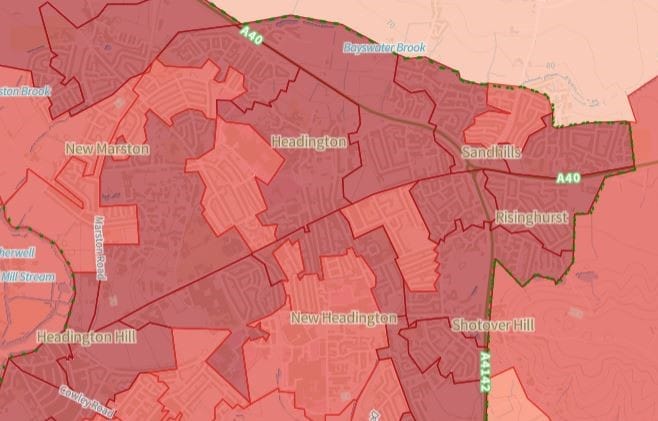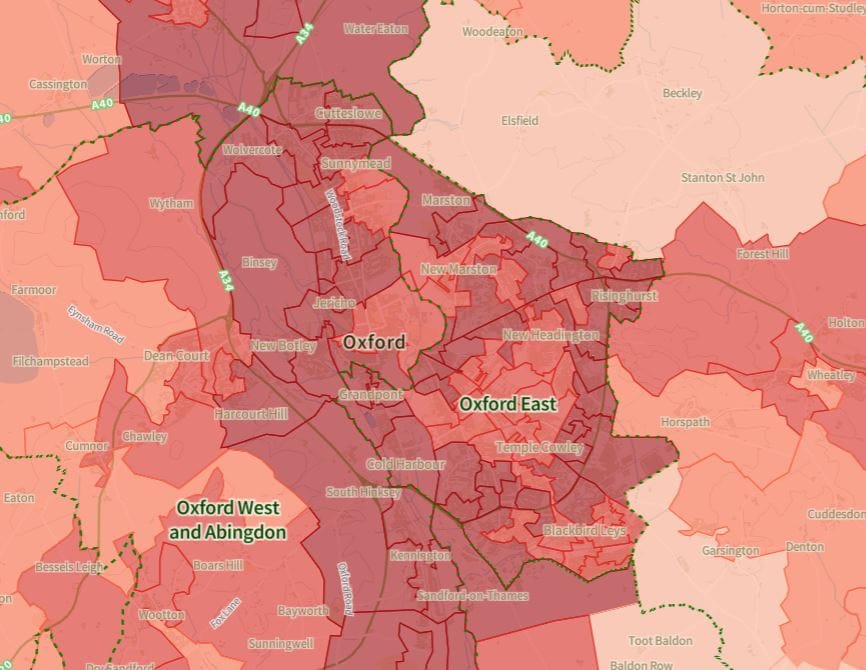Headington neighbourhoods found to be pollution hotspots

New analysis by Friends of the Earth (FOE) has found that over a quarter of neighbourhoods in England are pollution hotspots - areas where people and wildlife are harmed by a toxic cocktail of dirty water, polluted air and disruptive noise and light.
FOE analysed data for 4 types of pollution: water, air, noise and light. Pollution hotspots are where all 4 pollution types exceed thresholds that are damaging to nature and wildlife.
FOE has produced an interactive pollution map of England, which people can search by postcode to find out how polluted their neighbourhoods are.
The map shows that most of Headington's neighbourhoods were found to be pollution hotspots, and the few that aren't exceed harmful thresholds for all forms of pollution except noise.
But Headington isn't alone in this: many other areas of Oxford are also pollution hotspots, with noise pollution being the only type of pollution below a harmful threshold in those that aren't - i.e. they all have harmful levels of water, air and light pollution. Interestingly, some areas on the outskirts of Oxford, such as Beckley and Horspath; Botley and Kennington; Dean Court, Cumnor and Appleton; Radley, Wooton and Marcham; and Berinsfield and Wittenham, suffer with harmful levels of noise pollution but not air pollution.

Although FOE's analysis is focused on harm to wildlife and nature, we share these same polluted environments and suffer too - physically, mentally and financially. So whilst toxic fumes from traffic messes with bees' ability to find flowers to feed on and pollinate, and noise and light pollution disrupts birds and other animals' ability to find food and communicate with each other, there are up to 43,000 deaths in the UK linked to air pollution every year – over 7% of annual deaths, making air pollution the biggest environmental threat to public health. And more evidence is emerging about how noise pollution from transport harms human health (see for example this blog by the UK Health Security Agency).
In Oxford, road transport is the main source of air and noise pollution. The City Council's 2023 air pollution report confirms that transport is responsible for 68% of Nitrogen Oxides (NO+ NO2) emissions in the city. So while reducing traffic won't solve all our pollution problems, it has the potential to greatly improve our health and that of the nature and wildlife around us - which we are a both a part of and rely on for our wellbeing.
